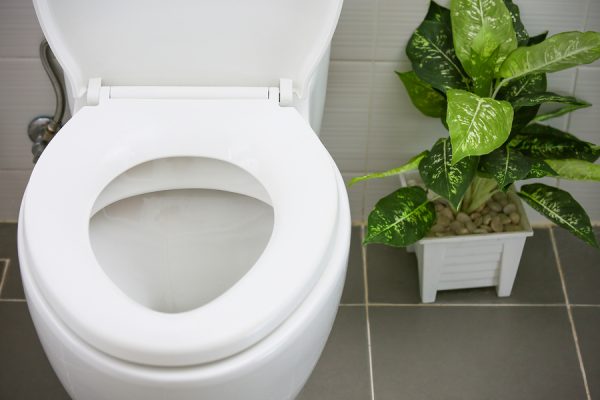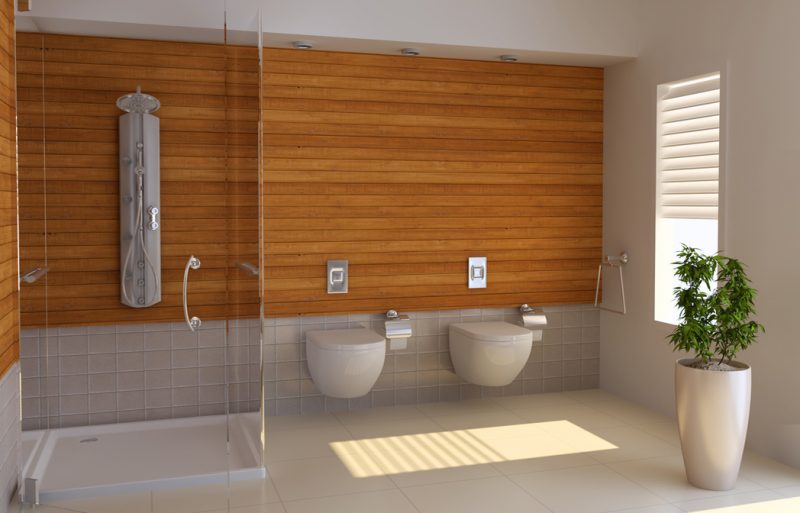Best Toilet Wax Rings For A Leak-Free Seal
Toilet seals are a crucial component of any toilet installation. They provide the meeting point between the bottom of the toilet itself and the pipes below. Without them, there’s a high chance of leakage from the toilet onto and around your floor.
Some toilet seals are made from rubber, but wax is arguably the most popular material. Wax has been used for toilet seals for a long time, and for a good reason. Wax is malleable and adjusts well to the weight of the toilet, creating a super tight seal. However, wax-free seals are also famous for various reasons such as cleanliness and durability.
What Are Toilet Wax Rings?
In simple terms, toilet wax rings are a thick, ring-shaped piece of wax (some with a plastic ring around the inner edge called a sleeve). The wax ring fits between the toilet outlet (the opening on the underside of the toilet) and the drain, creating a tight seal to bridge any gaps and prevent leakage and odors. They are found at all homeware stores and are super affordable and last a long time…until they need changing. They are a crucial part of toilet installations.
How Do Toilet Wax Rings Work?
Wax toilet rings work as a seal between the toilet and the floor and pipes below. Because they are soft, they fit snugly into the toilet outlet and the pipes to seal off any leakage. To install, you remove the old wax ring, slot the new one into the hole in the floor, then lower the toilet over the ring, (onto the bolts).
Material
Consider the material of the toilet seal ring you are purchasing, as there are a few different options. The options are the classic wax option and wax-free options which are made of rubber. Some people find wax-free seals preferable as they are a little less messy than wax.
What you need to know before buying a toilet
One of the calls we often receive from our clients has something to do with us helping them fit a new toilet into their bathroom. When we receive these calls, the first question we often ask is: “Do you know if this new toilet is going to suit your current plumbing configuration?”
Waste configuration
Here’s a question we need an answer to before considering which toilet to install: Is your current toilet a p-trap or an s-trap?
Water supply tap location
When choosing a new toilet suite, it’s best to take measurements of where your existing water supply tap is located.
High-level cisterns
Older toilets with high-level cisterns usually have water supply taps located up high, which more often than not lands right where the new cistern needs to go.
Low-level cisterns
Low-level cistern toilets often have the water supply tap tucked in behind the toilet. This can sometimes end up in the way of the toilet bowl if you’re looking to install a back-to-wall suite.
CAN I INSTALL A COMMERCIAL TOILET IN MY HOME?
Many businesses and stores use commercial toilets that don’t come with a tank on the back. A tankless toilet means less space is needed for the fixture, changes maintenance expectations and makes cleaning much easier. Is it possible for homeowners to install a commercial toilet or a similar model in their own houses? Let’s take a closer look.
OPERATIONAL DIFFERENCES
There’s a big reason why you don’t see commercial toilets in homes: The toilet you see in a typical business operates differently than a traditional model. A retail store or other commercial building’s plumbing system is usually built specifically to provide for the capabilities of a commercial grade toilet, while residential water supply lines and drains do not. Traditional residential grade toilets use a siphon to suck water and waste from the bowl and into the drain. However, water must come in fast enough to fill the siphon tube in order to create a successful flush. Residential water supply lines simply don’t have the necessary water volume to allow a commercial toilet to flush with power. A residential toilet utilizes a water storage tank at the back to provide enough water to create a strong flush that will rid the bowl of waste. Water from the tank flows down into the bowl with enough force to activate the siphon and pull waste into the and down to the sewer.
A commercial toilet, on the other hand, doesn’t rely on a tank of water. Instead, it receives water from a larger diameter commercial grade water supply line that delivers water at a high enough pressure to carry waste right through the drainage system. While these models often use the same amount of water as a residential toilet, commercial grade toilets must use water very suddenly and violently. And as we noted earlier, residential water supply lines aren’t equipped to deliver that much volume all at once.
IS TANKLESS COMPLETELY OFF THE TABLE?
Although you may not be able to install a toilet exactly like ones seen in your favorite business, homeowners can take advantage of tankless toilets. Some models have been built specifically for home use, but you’ll likely need a pump or other technologies to help power the flush. One thing to consider is that tankless toilets are also much noisier than traditional residential models, so a nighttime flush is likely to wake up everyone in the house! Homeowners must also check that their plumbing system uses 1 inch diameter water supply pipe in order to ensure that the toilet has enough volume and pressure to refill quickly. Most residential water supply lines are typically ½ inch or ¾ inch in diameter. Anything less than 1 inch diameter supply lines will have you waiting for the bowl to refill.
Commercial, or tankless, toilets are certainly beneficial, but there are a number of considerations that must be made in order to ensure that your residential plumbing system can adequately support them.
Something doesn’t smell right with toilet install
My husband installed a new gasket on the toilet in our master bathroom as part of adding a new ceramic tile floor. He’s pretty handy, but soon after I noticed a sewer gas odor in this room. He can’t smell it, and I’m reluctant to have him do the job over. The toilet doesn’t move, the caulking is perfect so I can’t imagine where the odor is coming from. For years there was never an odor. What needs to be done to correct this?
The toilet bowl gasket was not installed correctly. The smoking gun is the fact no odors were ever present before your well-intentioned husband started the bathroom remodeling job. I’m afraid that he needs to start over, but we need to discover what he did wrong so this second attempt gets it right.
As for the source of the odor, it is probably the holes where the toilet bolts pass through the ceramic toilet bowl base, which are usually never sealed. The sewer gas that’s wafting past the toilet wax gasket can easily seep past the bolts and the decorative caps. The caulking between the base of the toilet bowl and the floor will do nothing to stop the odor if these bolt slots are unsealed.
The seal between the toilet flange and the toilet bowl is critical. The toilet flange is the transition fitting that allows you to connect the toilet to the drain piping. Not only is there the issue of sewer odors, but vermin and water can also get through this joint if the toilet gasket is not making positive contact.
When you replace a toilet gasket, you need to pay close attention to many details. One thing homeowners, and some rookie plumbers, fail to look at is the recessed area under a toilet bowl.

HOW TO MEASURE FOR A TOILET
Replacing or installing a toilet can sound like a daunting task. With many types and styles of toilets to choose from, it’s easy to feel overwhelmed with decisions. Fortunately, with a few basic measurements, you can choose and install a toilet that’s a perfect fit for your bathroom, whether it’s a bathroom in your home, office or other business. Read on for directions on how to measure for your toilet and toilet seat.
STANDARD TOILET DIMENSIONS
When you are considering your bathroom layout so you can add toilet partitions to a bathroom in a park, school, office or other space, you need to measure carefully. You want users of your restroom to have adequate space in each stall without wasting any usable area. In addition, you want each restroom cubicle to be uniform in size and set up correctly.
This toilet-buying guide will walk you through the standard toilet measurements you need to consider when buying partitions:
Seat height: Measure the space between the floor and the toilet seat top. Standard toilets will measure between 15 and 17 inches, while chair style toilets can be up to 17 inches.
Toilet bowl shapes: Round toilet bowls take up less room than elongated bowls, which are usually up to three inches longer. Remember you will want to have 24 or more inches of space in front of the toilet as well as adequate space around the bowl.
Toilet width: Measure either the widest part of the bowl or the widest part of the tank, whichever is broader, to determine the required width of each stall. Keep in mind you need some space on the sides as well.
Toilet Rough In Dimensions: A toilet’s rough-in measurement is the space between the wall behind the toilet and the center of the waste pipe. Standard toilet rough in dimensions are 12 inches but can be anywhere from 10 to 14 inches in some cases.
Overall, a standard toilet will be between 27 and 30 inches deep, with a back height of 21 to 31 inches and a width of about 20 inches. An ADA-compliant version needs to have a seat height of 17 to 19 inches. This is one reason why partitions around ADA-compliant bathrooms are different.
HOW TO MEASURE
If you’re measuring for an all-new bathroom space, or completely remodeling a bathroom, you’ll want to have an idea of the overall layout and design of the bathroom. If you’re designing for a business or public restroom where there will be multiple toilets, be sure to leave space available for partitions and partition doors. When considering how to measure for toilet space, here are a few things to keep in mind.
